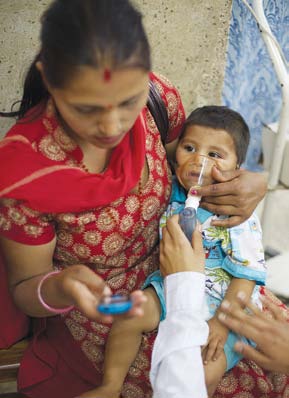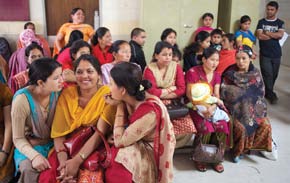Advancing the standard of medical research means saving more lives for this hospital in Nepal
In his role as a paediatrician at Kathmandu’s Shree Birendra Hospital, Arun Neopane is a voracious consumer of journal papers. This passion led to his appointment in 2003 as the hospital’s Officer in Charge and editor of the Journal of Shree Birendra Hospital (JSBH). Over the next few years, Dr Neopane led the conversion of JSBH from an annual publication with news, views and hospital updates to a biannual peer-reviewed scientific journal – with original papers, review articles and case reports – and made it available electronically through Nepal Journals OnLine (NepJOL).
Research out of reach

Despite having subscriptions to a small number of international journals, the hospital was desperately short of the up-to-date medical literature that doctors need to maintain and upgrade their skills and knowledge. As is the case in other low-income countries, university libraries and research organizations in Nepal do not have the budgets to pay for important peer-reviewed journals. Critically, Dr Neopane and his team convinced the hospital administration in 2007 to invest in an internet connection. This unblocked the window to the wider world of medical research, but, without access to journals, that window remained locked. The hospital staff could now read abstracts via the PubMed database, but the complete papers – crucial for the understanding required to incorporate research results into practice – remained out of reach.
Nevertheless, it was also the new internet connection that led Dr Neopane to Research4Life’s HINARI Programme. The institution was granted access to HINARI in February 2008 and it hasn’t looked back since. The Shree Birendra staff gradually gained access to a vast repository of medical literature that was previously unaffordable and inaccessible
“I can remember those days when we had to go to the library and sit in the archives section turning page after page, reading all the abstracts and getting them Xeroxed, and finally coming back to square one, frustrated by the literature search and finally not finding what one needed. Gone are those days for doctors now, and all because of free access to medical literature through HINARI.»
Better clinical treatment
The most concrete result of the hospital’s access to HINARI is better clinical treatment that has directly improved patient health. For example, research published in Pediatrics (the journal of the American Academy of Pediatrics) showed that zinc is essential in treating diarrhoeal diseases in children, mitigating illness and even saving lives. Ironically, although some of this work had been performed in Nepal, Nepalese institutions could not afford the subscriptions to the journal and the country’s doctors did not have access to the results. Using HINARI, Nepalese paediatricians discovered the information and changed their treatment of diarrhoea, saving many lives and improving the quality of life of many sick children.
«More sophisticated medical research will only be possible in Nepal with
access to the literature that HINARI provides.»
Beyond better clinical practice based on others’ research, HINARI has transformed the way that medical research is performed, not only at Shree Birendra Hospital but also for the Nepalese medical community as a whole.
And it was because of HINARI that Dr Neopane was able to advance his own research. In March 2007 he was appointed editor-in-chief of the Journal of Nepal Paediatric Society (JNPS), the oldest specialty journal in the country. Launched in 1981 and published annually, JNPS had struggled as a credible scientific publication. With a small editorial team, Dr Neopane has transformed it into a thrice-yearly, internationally recognized, peerreviewed journal with its own website. HINARI made all this possible by allowing Dr Neopane and his colleagues to learn from leading journals.

Dr Neopane’s achievements were further recognized with his appointment as general secretary of the recently established Nepal Association of Medical Editors. He describes Nepal’s medical research as still in its infancy,
but he is confident that it will progress from the current work, which mostly comprises clinical features and epidemiology, to more complex work based on molecular biology and genetics.
HINARI has fundamentally changed the research landscape in Nepal, with five national journals now indexed in PubMed and many more aspiring to this (including JNPS, which will be considered for PubMed in February 2012). Internationally renowned journals such as BMJ, the New England Journal of Medicine and The Lancet occasionally publish articles by Nepalese researchers. Without HINARI, such achievements would have remained a dream.
This story is part of the Making a Difference case study collection. Read more stories from Research4Life users.





